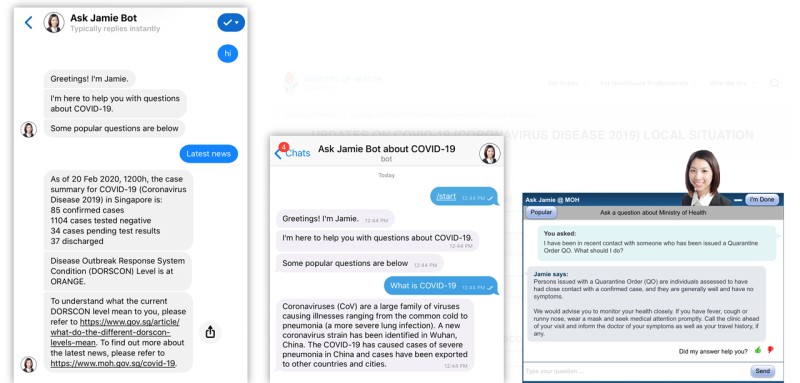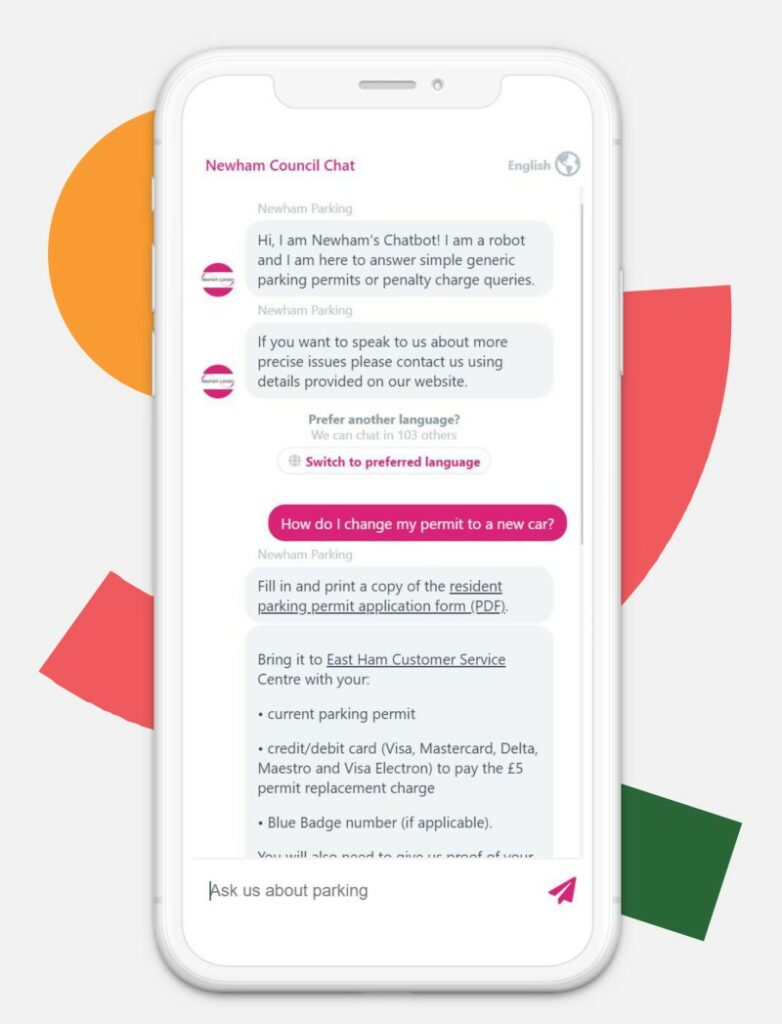The impact of conversational AI on critical services: 3 key takeaways
Artificial intelligence (AI) is expanding at breakneck speed, with the market for AI-enabled software predicted to reach US$125 billion by 2025.
While much of the conversation around AI revolves around its potential to disrupt entire industries and displace millions of workers, it could also be a game-changing communication tool for people that need critical services, such as:
- Emergency services (e.g., police and fire departments)
- National and local government units
- Healthcare services
- Banking and financial services
- Food
- Transport and more.
This is where conversational AI comes in, empowering customer service departments and teams with the tools to engage customers efficiently and effectively.
What is conversational AI?
Conversational AI is an umbrella term that refers to multiple technologies, such as virtual assistants and chatbots that engage users using natural, human-like queries and responses.
As IBM explains, conversational AI uses “large volumes of data, machine learning, and natural language processing to help imitate human interactions, recognising speech and text inputs and translating their meanings across various languages.”
While this description makes it sound like conversational AI will make customer service teams obsolete, in reality, solutions like chatbots and virtual chat assistants are typically designed to augment your live agents’ capabilities, whether it’s by automatically translating queries and responses into any language, enabling self-serve features by signposting to your tools and portals or responding instantly to FAQs on any channel.
What are the benefits of conversational AI?
In the context of critical services, conversational AI could make it easier to provide life-saving services without having to increase your customer team’s headcount.
For example, residents can contact their nearest police department through their WhatsApp account to report untoward incidents in the middle of the night without having to make a phone call. If you have a complaint about your credit card statement, you can use the bank’s self-serve facilities on their website to file a dispute and get coursed immediately to a live agent who can chat with you in Spanish.
Here’s a closer look at three ways conversational AI could change how humans interact with organisations that provide critical services.
1. Giving staff more time to focus on complex queries
Customer support teams in sectors like government, finance and healthcare typically spend hours answering routine questions every day. The COVID-19 pandemic has only exacerbated the situation, with the average contact centre seeing calls scored as “difficult” rise to 20% from the usual level of 10%. These calls covered pandemic-related problems such as insurance coverage disputes, appeals to extend bill payment deadlines and travel cancellations, among others.
This means that support agents — who themselves are also dealing with the effects of the pandemic — now have to divide their attention between an increased number of complex customer queries on top of routine messages. Answers for the latter may be simple, but the demand they place on staff can increase wait times and negatively impact customer satisfaction.
Conversational AI provides a way to consolidate responses to the most common customer questions, allowing live agents to focus their attention on customers that need them most.
For example, in Singapore, Ask Jamie, a virtual assistant developed by the Singapore Government in 2014, was updated to respond to questions about pandemic-related topics, such as the latest case counts and social distancing guidelines.

At Futr, we recently worked with Newham Council to deploy our live chat and chatbot platform across their channels to give the council’s call centre the bandwidth to focus on more complex conversations about the area’s parking guidelines.
Rather than wait several minutes to speak to a live agent, residents in the London borough used our self-service features to get instant answers to frequently asked questions about parking.

In just six months, Newham Council was able to:
- Answer 10,491 questions automatically
- Save 84 hours in call time
- Generate £40,000 in savings.
2. Taking live chat capabilities to new channels and new heights
Live chat is an essential component of omnichannel availability. This means being everywhere and anywhere for your customers, whether it’s your website, voice calls, social media, or messaging apps like WhatsApp, Telegram and WeChat.
While live chat is by no means new (it traces its origins to PLATO, a computer-based education program at the University of Illinois in the 1970s), its enduring popularity, paired with the growing importance of digital communication channels, make it an ideal platform for engaging customers.
In fact, 79% of customers prefer live chat over other channels because of the immediacy it provides. And according to McKinsey, 32% of B2B buyers also consider 24/7 live chat an essential feature of best-in-class suppliers.
Of course, you could argue that phone calls also provide the same level of immediacy. But contact centres, particularly in the public sector, often have too few people for too many calls. Case in point: it’s estimated that HMRC received 43 million calls in 2018, 4 million of which went unanswered.
And when it comes to critical services of a sensitive nature, such as those involving personal health, many people may be uncomfortable vocalising their situations and personal issues to a customer service agent over the phone.

There’s also the fact that many people simply have an aversion to phone calls. According to research from BankMyCell, 75% of millennials avoid making phone calls because they see them as time-consuming, and 81% experience discomfort before a call due to anxiety.
Conversational AI offers a solution to these problems, and then some.
Chatbots and live chat add-ons can be deployed across all your digital channels, from your website to social media, creating an omnichannel network for your customer service agents.
These same live chat “superpowers” can also enable self-service features and:
- direct stakeholders to your critical service pages or phone numbers;
- help them find what they need on their own; and
- interact with a human agent only when they want or need to.
This setup gives your customers peace of mind knowing that they can reveal their personal information only when necessary.
Finally, conversational AI can add value to your customer service facilities. For example, at Futr, our platform automatically translates customer queries and agent responses, making your customer support teams fluent in over 120 languages.
3. Providing data for customer sentiment analysis
Most conversational AI apps come with an analytics system built into the backend. This provides you with a wealth of data that you can use to improve your customer service experience.
For example, you can go over your chat logs to conduct customer sentiment analysis, keeping an eye on keywords that frequently come up. This strategy allows you to understand your customers’ most pressing concerns and whether you’re doing enough to resolve them.
You can also use that same data to improve your core services. For instance, a police department getting inundated with reports about antisocial behaviour in one area of town can quickly deploy additional patrols there. Complaints about bus delays on certain routes can enable councils to take decisive action by adding more buses.
The possibilities for making data-driven decisions are endless.
The future of conversational AI is here
While AI is often hyped to be a magic bullet, the truth is that its real-world applications are more grounded and more practical than you’d expect. This is especially true with conversational AI.
While its transformative impact on customer service in both the private and public sectors is exciting, AI-powered chatbots and live chat add-ons are accessible to even the smallest organisations.
Be sure to the Futr blog for more insights on the state of artificial intelligence and its impact on customer relationship management. Get in touch with the Futr team to discuss innovative solutions to engage your customers and empower your live agents.

